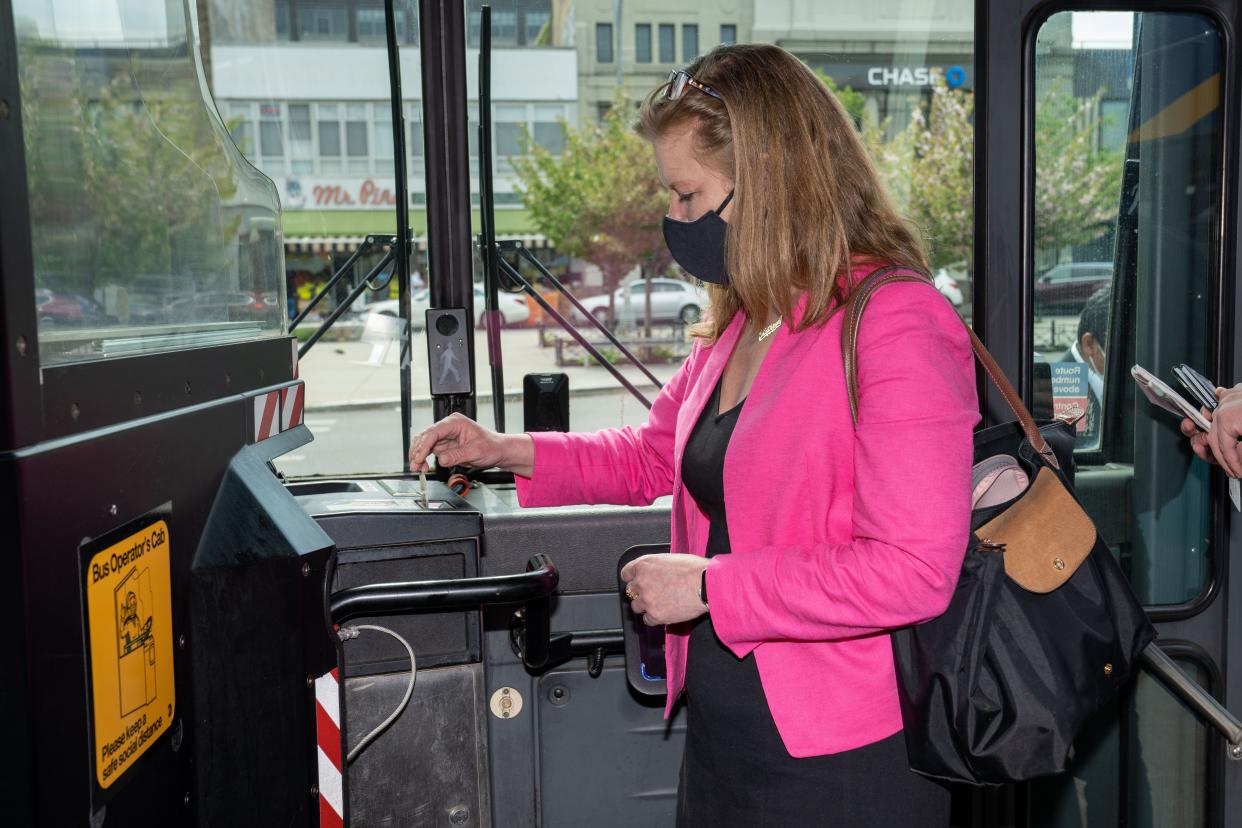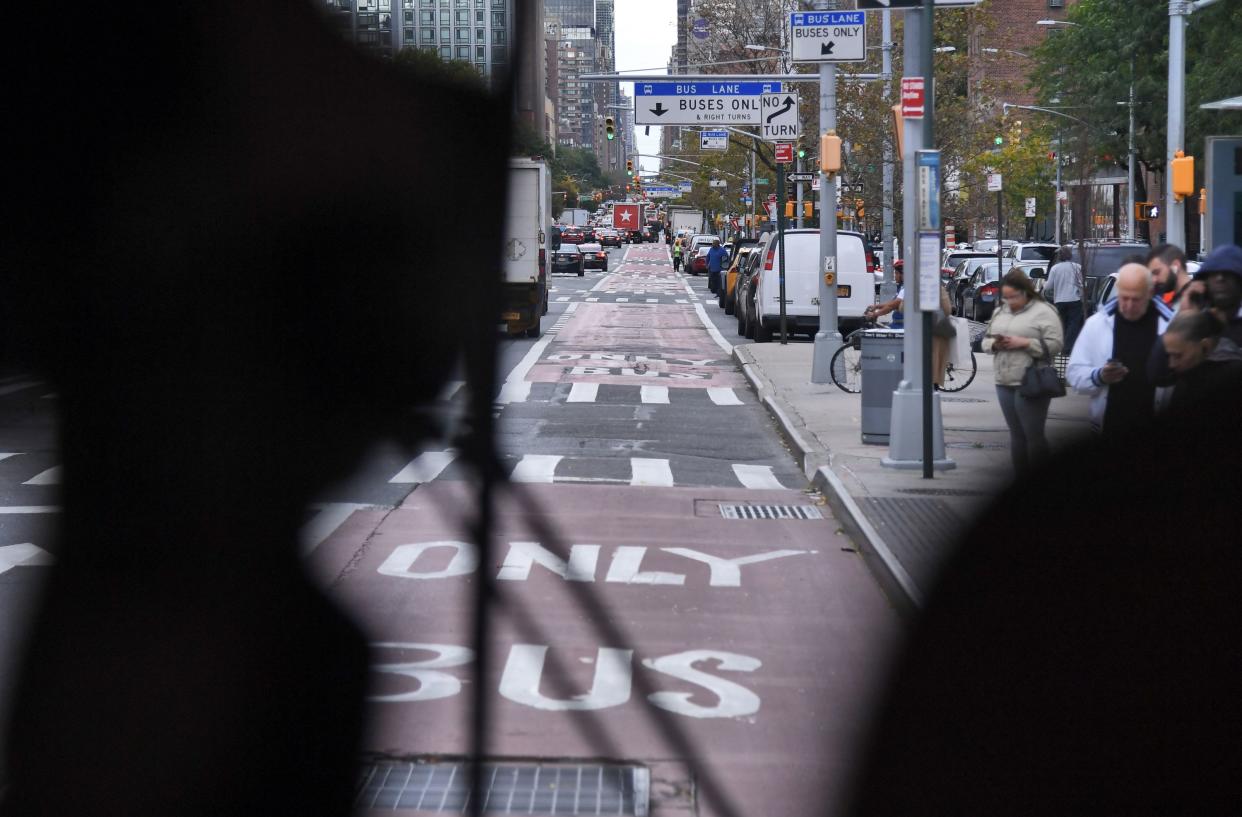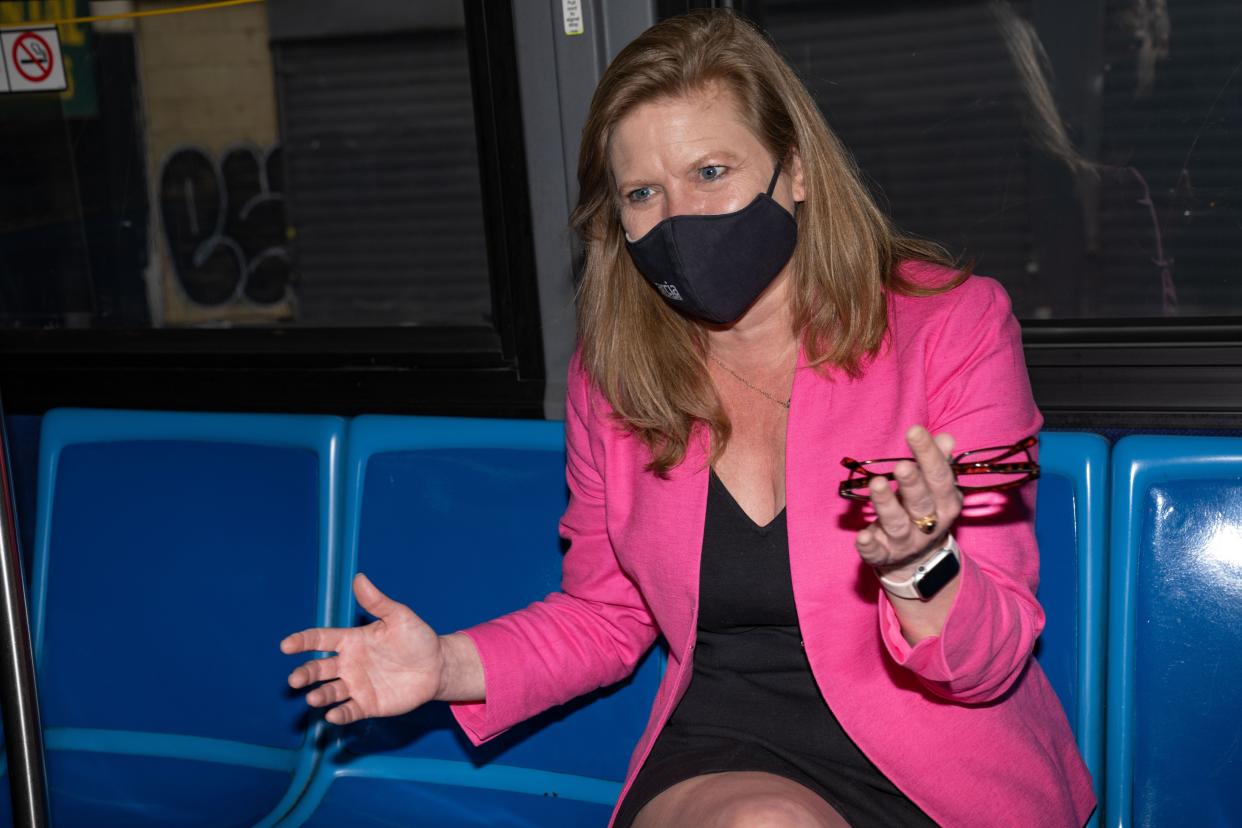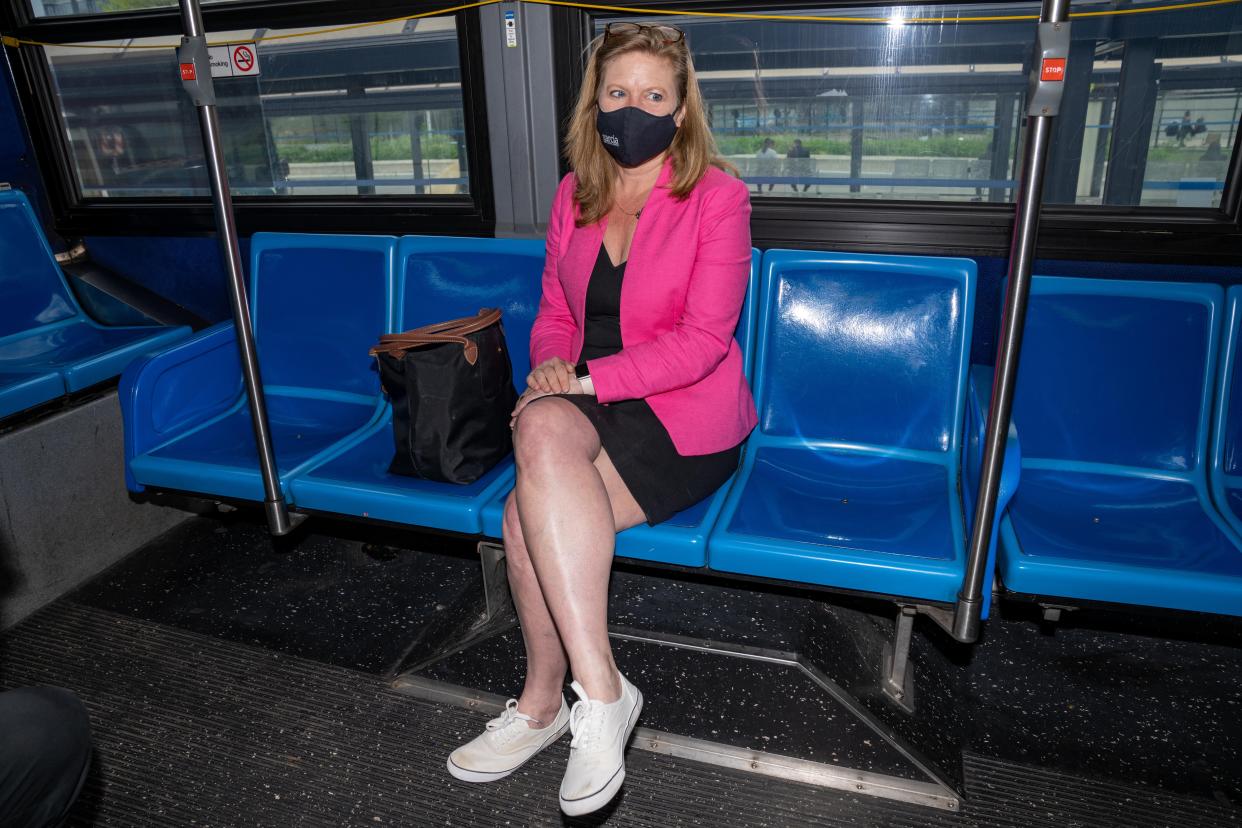NYC mayoral candidate Kathryn Garcia says she can speed up bus service with more dedicated lanes
For many New Yorkers, bus lanes mean only one thing: a slow ride.
Mayoral candidate Kathryn Garcia, the city’s former sanitation commissioner, sees herself as a logistical expert who’s well-equipped to streamline the city’s sluggish bureaucracy — skills she said will help her speed up New York’s notoriously slow buses.
“The real ability the mayor has when it comes to transit is to get things out of the buses’ way,” Garcia said during a bus ride Sunday with the Daily News along Brooklyn’s B46 route. “Whether you’re creating dedicated lanes, or enforcing those dedicated lanes, that’s all under the city’s control. If you get the traffic out of their way, it’s simple: they move faster.”

Building more of those lanes has been a challenge for the de Blasio administration, where Garcia worked for more than seven years. Those efforts must improve if the next mayor is to meet the requirements of the “streets master plan” passed by the City Council in 2019, which requires the city to install 30 miles of new bus lanes each year starting in 2021.
The city has in recent years faced several lawsuits over plans to implement new bus lanes across the city, including ones that delayed changes to Manhattan’s 14th St. and Main St. in Flushing, Queens.

Garcia said convincing more New Yorkers that bus lanes are a net positive could help prevent more of those lawsuits.
“Sometimes people act like a bus lane is going to be the worst thing ever,” she said. “But you look at what’s happening when buses go faster: commutes get better, and you’re attracting more people to use it. This actually can bring more commerce to businesses. If you’re on a bus lane where people are now getting to your store faster, you can actually increase the amount of revenue you’re making.”
But she also noted there’s plenty of room for progress in the way the city installs new bus lanes.

Contractors who stripe roads and paint the bus lanes regularly wait months to receive payment for their work — something Garcia said is no accident.
“We get in our own way. Everywhere, from the mayor’s office of contracts to the comptroller’s office, we make it so it is hard not only for contractors to do the road painting and the striping, but also all our social service contracts,” said Garcia. “We’re asking small companies to be banks for the city of New York and float the government money — and we end up paying for that.”

The vast majority of the city’s road-striping work is done by outside contractors — but Garcia said she wants to bring more of that work in-house. The Sanitation Department, with its 7,000-plus uniformed workers and more than 3,000 trucks and plows, is an example of how the city can do the work with its own employees, she said.
“I honestly think having more in-house [workers] makes it faster and more agile,” said Garcia. “You can respond on the dime to anything. It’s cheaper in the long run. Otherwise, you’re just paying companies to profit off overhead.”
